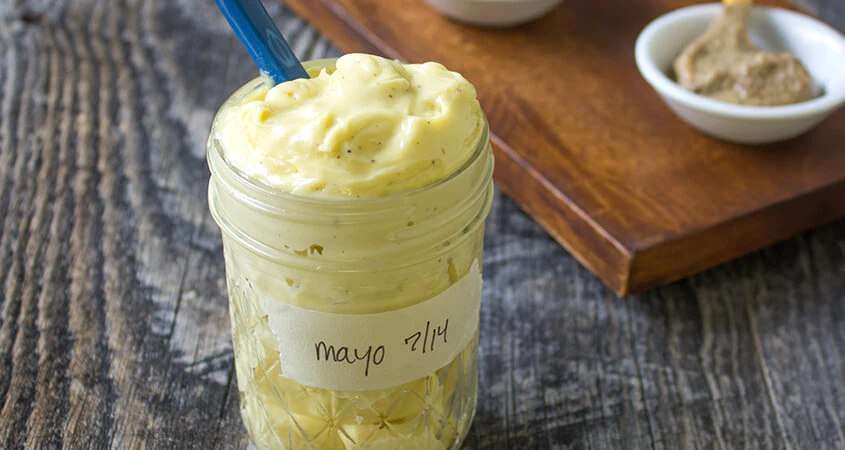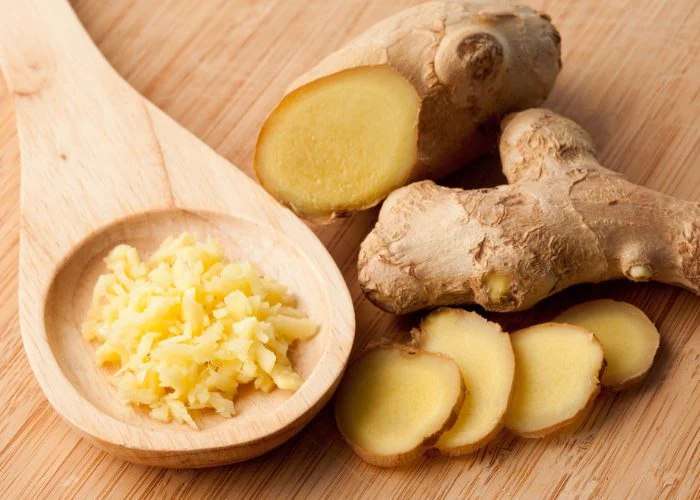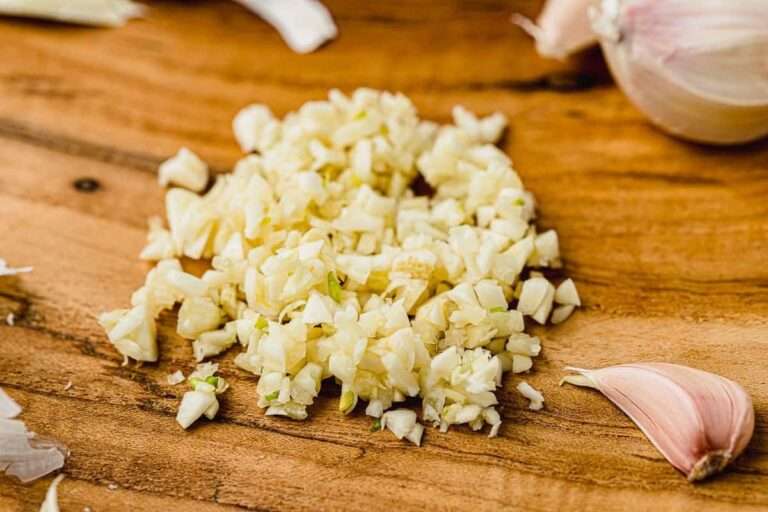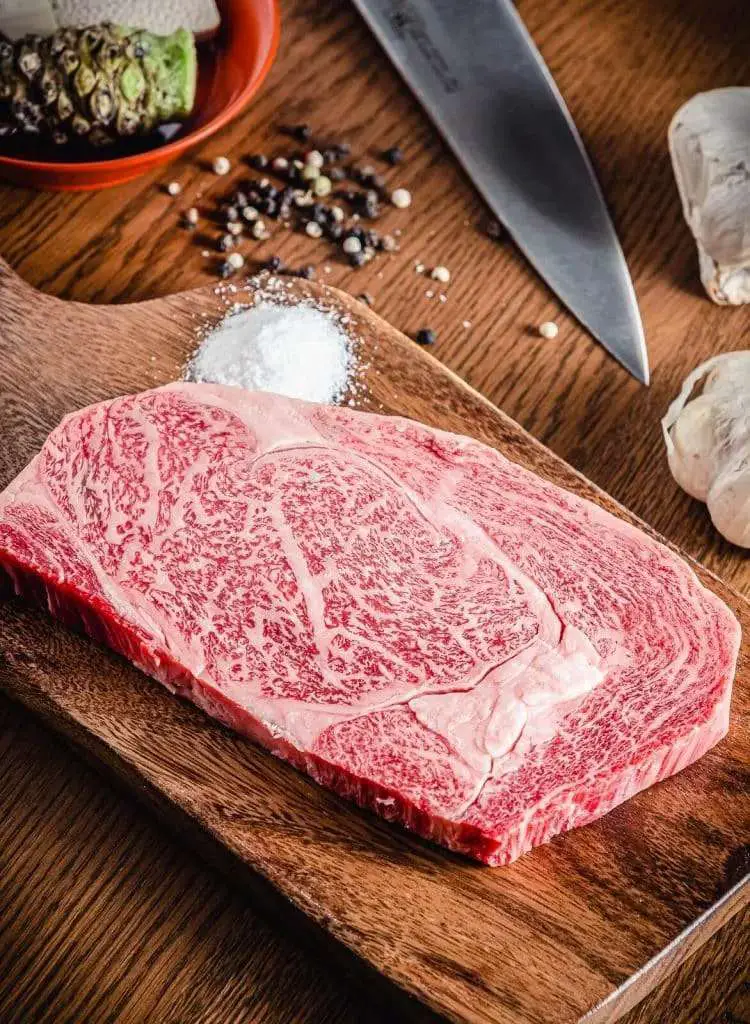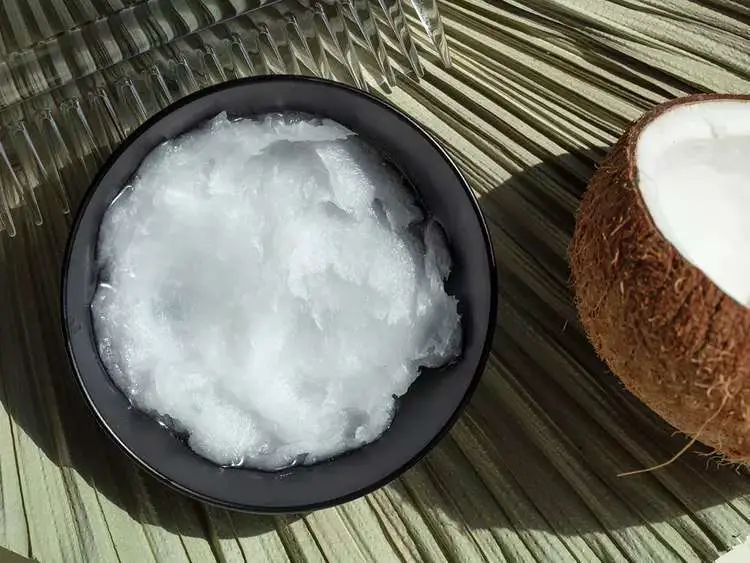How to Make Mayonnaise With Olive Oil?
To make mayonnaise with olive oil, combine one egg yolk, one tablespoon of lemon juice or vinegar, salt, and gradually whisk in one cup of olive oil. This emulsion creates a thick, creamy spread ideal for various culinary applications.
How to make mayonnaise with olive Oil? Creating homemade mayonnaise with olive oil is not only a testament to culinary craftsmanship but also a way to control the quality of ingredients and tailor flavors to your preference. Olive oil, known for its health benefits and distinctive flavor, provides a delicious twist to traditional mayonnaise.
This method emphasizes a gentle, steady mixing technique to ensure the perfect consistency. By mastering this simple condiment, you elevate your dishes with a touch of homemade excellence. The versatility of this olive oil-based mayonnaise makes it a perfect companion for sandwiches, dips, or dressings, offering a richer and more nuanced taste than store-bought alternatives.
Unique Qualities Of Olive Oil Mayonnaise
Olive oil mayonnaise stands out in the crowded world of condiments. Properly made, it’s a smooth, rich emulsion of eggs and olive oil. This mayo brims with flavor and potential health benefits. Unlike traditional mayonnaise, its olive oil base infuses it with distinct characteristics.
Flavor Profile
Olive oil yields a more pronounced flavor compared to other oils used in mayonnaise. Depending on the type of olive oil used, flavor notes can range from peppery to fruity. Ingredients include:
- Extra virgin olive oil (for maximum flavor)
- Fresh eggs or egg yolks
- Lemon juice or vinegar
- Mustard
- Salt
This blend results in a mayonnaise enhanced with the subtle, yet unmistakable, tastes of the Mediterranean.
Health Benefits
Olive oil is renowned for its health benefits. It is the cornerstone of the heart-friendly Mediterranean diet. Rich in monounsaturated fats and antioxidants, it offers a bevy of health advantages:
| Nutrient | Health Benefit |
|---|---|
| Monounsaturated Fats | Improve heart health |
| Antioxidants | Combat oxidative stress |
| Vitamin E | Support immune function |
By substituting traditional oils with olive oil, mayonnaise becomes a heart-healthy condiment that supports overall well-being.
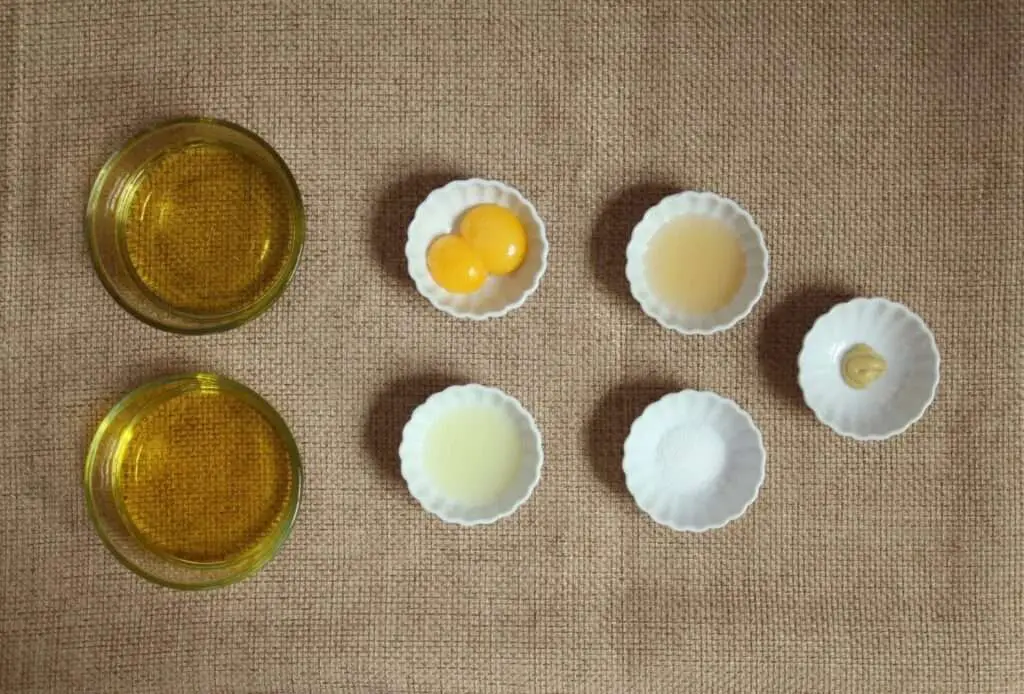
Essential Ingredients
Embarking on the homemade mayonnaise journey begins with understanding the essential ingredients. The beauty of crafting mayo from scratch is the ability to handpick quality components for a truly bespoke flavor. Let’s break down the must-haves that will churn your concoction into a smooth, rich spread.
Choosing The Right Olive Oil
The star player in elevating your mayonnaise’s flavor profile is the olive oil chosen. Opt for extra virgin olive oil for its robust taste and high-quality character. A quick tip: a milder olive oil won’t overpower your mayo, balancing out the final taste.
Eggs: Freshness Counts
Fresh eggs are the backbone of a stable mayonnaise. The fresher the egg, the better the emulsification and richness. Ensure your eggs carry a recent date and come from a credible source. This will not only improve taste but also ensures food safety.
The Acid Component: Vinegar Or Lemon Juice
Acid adds zest and tang, playing a pivotal role in mayonnaise. Choose between white vinegar for a clean, sharp taste or lemon juice for a citrusy note. Both balance the oil’s heaviness and contribute to the perfect texture.
Salt And Additional Seasonings
- Salt – A pinch of salt is essential for bringing out the mayo’s flavors.
- Mustard – Optional, but a dab adds depth and helps in emulsification.
- Herbs – Infuse your mayo with herbs like dill or chives for a twist.
- Garlic – A clove of garlic can transform your mayo into an aioli, delightful for gourmet sandwiches.
Select and mix seasonings based on the desired taste, ensuring each addition complements the others for a harmonious blend.
Tools And Equipment
Unlock the secret to homemade mayonnaise with the perfect tools and equipment. Crafting creamy, rich mayonnaise with olive oil requires precision. Start with the right arsenal to achieve the best texture and flavor.
Mixing Bowls And Whisks
Begin with a sturdy mixing bowl. Ensure it’s non-slip for stable whisking. Choose bowls of various sizes to suit the quantity you plan to make. A reliable whisk is a must-have tool. Go for a balloon whisk, which incorporates air smoothly, enhancing the emulsion.
- Non-slip mixing bowl – secures the bowl while you whisk.
- Balloon whisk – designed to create a creamy texture.
Using A Blender Or Food Processor
A blender or food processor speeds up the process. These tools work best for larger batches. They create a stable emulsion quickly. Ensure your appliance has variable speed settings. Start slow, gradually increasing to incorporate the olive oil without breaking the emulsion.
- Ensure appliance is clean before starting.
- Variable speed settings – essential for a controlled pour.
- Use a slow drizzle of olive oil to begin with.
Choose the right tool based on your preference for convenience and quantity. The manual approach with whisk and bowl works well for small servings. A blender or food processor suits larger batches, ensuring a smooth, creamy finish every time.
Step-by-step Preparation
Welcome to the ultimate guide on creating your very own homemade mayonnaise with the richness of olive oil—right in your kitchen. This step-by-step preparation will ensure that you craft a creamy and delectable condiment that can elevate any dish. Follow these easy steps, and you’ll be a mayonnaise-making pro in no time!
Mixing The Base
Start by assembling your fresh ingredients. You’ll need:
- 1 egg yolk at room temperature
- 1 tablespoon of lemon juice or vinegar for zest
- A pinch of salt for flavor
In a medium bowl, whisk the egg yolk, lemon juice, and salt until smooth.
Emulsification Process
This is the critical stage where your mayonnaise comes to life.
- Begin to drizzle in your olive oil very slowly while whisking vigorously.
- Continue to pour the oil in a steady, thin stream.
- The mixture should start to thicken as the oil integrates and emulsifies.
Keep whisking and adding oil until the mixture becomes creamy and fully emulsified.
Adjusting Thickness
If your mayonnaise seems too thick, don’t fret.
Simply whisk in 1 teaspoon of warm water at a time.
This will loosen the texture until you reach the perfect consistency.
For a thinner mayonnaise, add more lemon juice or vinegar.
Remember to taste and adjust your seasoning if necessary.
Common Mistakes To Avoid
Mastering homemade mayonnaise with olive oil creates a delightful topping or ingredient for many dishes. Yet, certain mistakes can turn this simple emulsion into a culinary disaster. Learn to avoid these common errors, and you’ll whip up the perfect mayo every time!
Oil Pouring Pace
Patience wins the race when adding oil. A slow and steady pour makes for creamy, dreamy mayonnaise. Rush this step, and you’ll end up with a separated mess. Here’s a tip:
- Start with a drop, then a trickle, and slowly increase to a thin stream.
Synchronize the pouring pace with your whisking. Consistency is key.
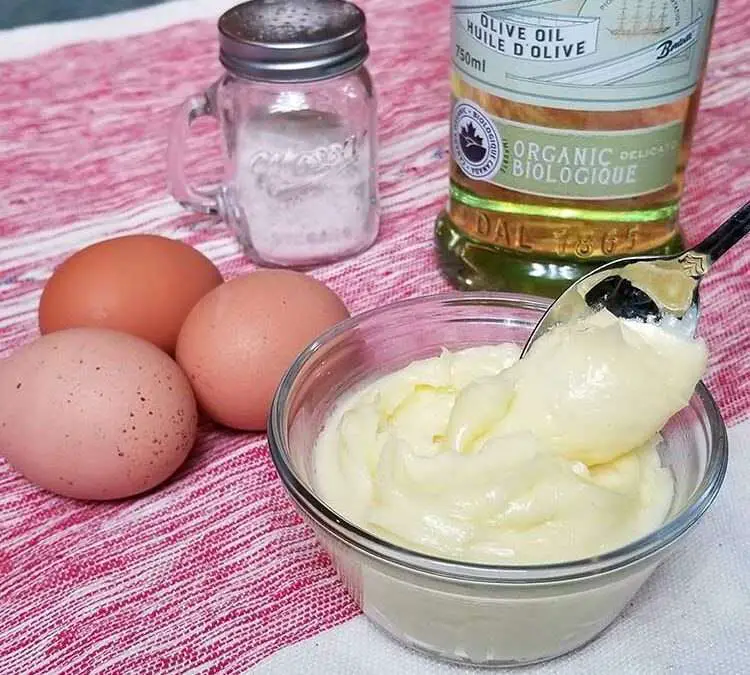
Temperature Issues
Cold ingredients often spoil the mayo mix. They can prevent the emulsion from forming properly. To sidestep this issue:
- Ensure eggs and oil reach room temperature before beginning.
This simple step can keep your mayo smooth instead of clumpy.
Fixing A Broken Emulsion
A broken emulsion can seem disastrous, but it’s salvageable. Don’t toss it out; fix it! Here’s a quick fix:
- Start with a fresh yolk in a bowl.
- Whisk vigorously and slowly add your broken mayo.
- Watch as the magic happens and your mayo emulsifies once again.
With these tips, your olive oil mayo will come out perfect. Enjoy the process and the delicious result!
Variations And Flavors
Making your own mayonnaise with olive oil not only gives you control over the ingredients but also allows you to experiment with flavors! Whether you prefer it classic or crave a personalized twist, the options for customization are limitless. Let’s explore some mouth-watering variations and flavors you can create at home.
Herb-infused Mayonnaise
Brighten your mayonnaise with fresh herbs for an aromatic touch. Here’s how you can make it:
- Choose your herbs. Dill, basil, and parsley are popular picks.
- Chop finely. This releases the herbs’ flavors.
- Mix into mayonnaise. A few tablespoons should do.
Perfect for sandwiches or as a dip, this herby spread will be a new favorite!
Spicy Or Sweet Additions
Liven up your mayonnaise with these easy mix-ins:
Just a spoonful can transform your mayo into a delectable spread.
Citrus Twists
Add zing to your mayo with the zest and juice of citrus fruits. Follow these steps:
- Zest your citrus. Lemon, lime, or orange work great.
- Squeeze for juice. Fresh juice makes a difference.
- Whisk into mayonnaise. Adjust to taste.
This citrusy mayo will surely brighten up your dishes!
Storing Homemade Mayonnaise
Savoring the fresh, tangy taste of homemade mayonnaise with olive oil is a culinary delight. To ensure this delightful condiment remains safe and delicious, proper storage is paramount. Let’s explore how to keep this homemade staple fresh and flavorful for as long as possible.
Refrigeration Best Practices
Keep your homemade mayonnaise chilled at all times to maintain its quality and prevent spoilage. Store in a clean, airtight container to protect it from absorbing any odors. Place the container in the coldest part of the refrigerator, usually at the back, away from the door. This avoids temperature fluctuations that can affect its stability.
- Avoid cross-contamination by using clean utensils each time.
- Seal the container tightly after each use.
- Keep the mayonnaise on a refrigerator shelf rather than in the door.
Shelf Life Considerations
Homemade mayonnaise with olive oil doesn’t contain preservatives, so it lasts a shorter time than store-bought versions. Typically, you can expect your homemade mayonnaise to stay fresh for up to one week when properly refrigerated. Note the ingredients’ expiration dates as these will also affect the mayonnaise’s shelf life.
| Day Made | Expected Freshness Duration | Visual Check | Smell Test |
|---|---|---|---|
| Day 1 | 7 days | Check for separation or color change. | Sniff for off odors every time before use. |
Discard the mayonnaise if you notice any:
- Changes in texture or color.
- Unpleasant odors.
- Tastes that seem off.
Following these guidelines will ensure your homemade mayonnaise remains a safe and tasty addition to your meals.
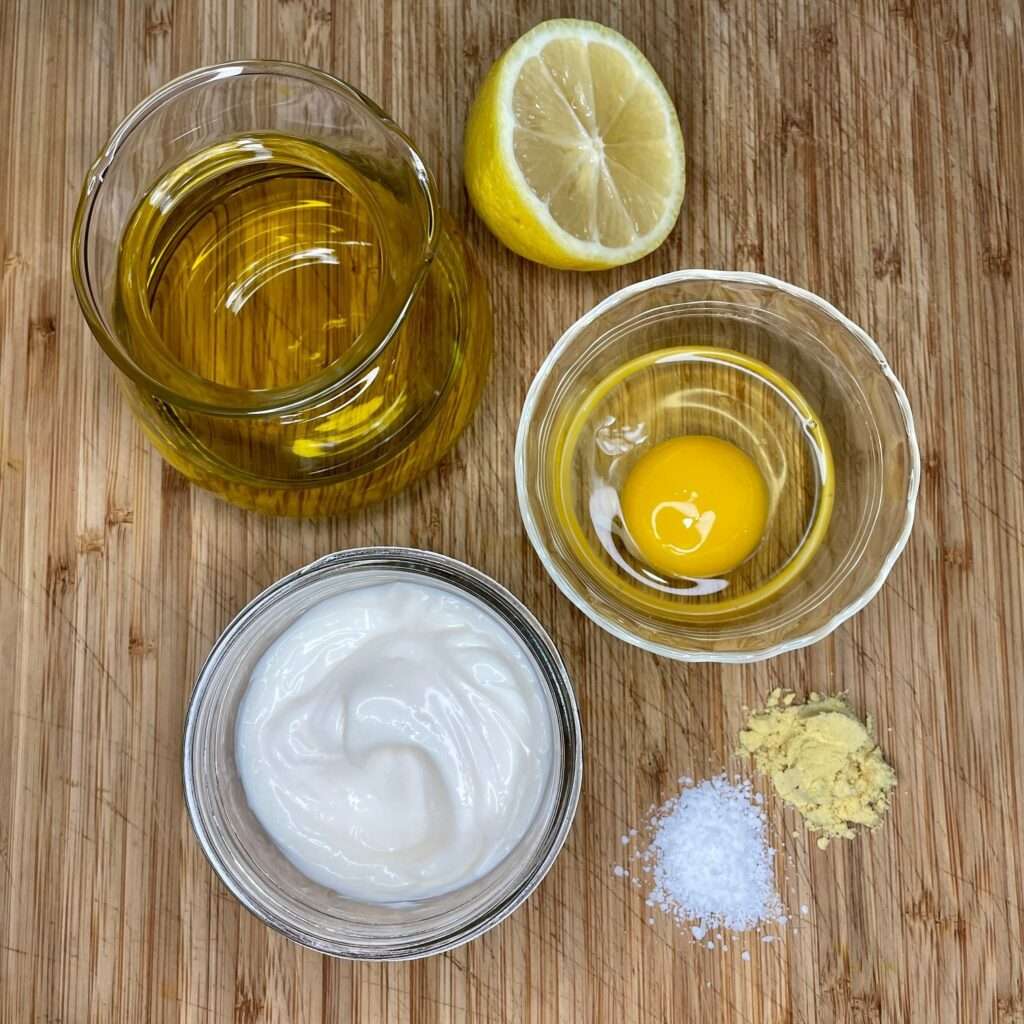
Culinary Uses For Olive Oil Mayonnaise
Olive oil mayonnaise brings a unique twist to everyday dishes. It’s a healthier alternative to store-bought varieties. Rich in flavor and packed with heart-healthy fats, it can elevate your cooking from ordinary to extraordinary. Discover versatile ways to incorporate this homemade condiment into your meals.
Sandwich Spreads And Dips
Transform your sandwich game with a flavorful spread of olive oil mayonnaise. Its creamy texture and robust taste add depth to deli meats or grilled veggies. Create memorable dips by blending this mayonnaise with herbs, spices, or even a splash of citrus. Guests will love the taste at parties and gatherings.
- Garlic Aioli: Mix with minced garlic for a bold aioli.
- Chipotle Spread: Stir in chipotle peppers for a smoky kick.
- Herb Dip: Combine with dill, chives, and thyme for a fresh herb dip.
Salad Dressings
Drizzle a little magic over your greens with an olive oil mayonnaise-based dressing. Toss salads with this dressing for an instant flavor boost. It pairs perfectly with leafy vegetables, pasta, or even potato salads.
- Creamy Balsamic: Whisk in balsamic vinegar for a rich dressing.
- Ranch Remix: Blend with buttermilk and spices for a new take on ranch.
- Cesar Charm: Add anchovy paste and Parmesan for a classic Caesar twist.
Creative Cooking Ideas
Step outside the box with these inventive ways to use olive oil mayonnaise. Use it in cooking for moist meat, or add it into baked goods. You can even use it to create luscious, healthy desserts.
| Dish Type | Uses for Olive Oil Mayonnaise |
|---|---|
| Meats | Coat chicken or fish before cooking for a moist finish. |
| Baking | Add to cake batter for richness without extra oil. |
| Desserts | Create a mousse base for a healthier pudding option. |
Navigating Dietary Restrictions
Many food lovers enjoy making their own mayonnaise, especially with the rich flavor that olive oil brings to the table. Yet, for those with dietary restrictions, the traditional mayonnaise recipe can pose some challenges. Fear not, as the quest for creating a delectable mayonnaise with olive oil can certainly accommodate varying needs!
Egg-free Alternatives
Let’s talk egg-free! Whether due to allergies, vegan diets, or personal preference, eggs can be off-limits for some. Good news: several ingredients can step in as egg substitutes. These include:
- Aquafaba: The liquid from canned chickpeas mimics egg whites.
- Ground flaxseeds: Mixed with water, they thicken like eggs.
- Soy lecithin: A plant-based ingredient that emulsifies mixtures.
Tip: Using a 1:3 ratio of these substitutes to olive oil yields creamy results.
Adjustments For Special Diets
Adapting recipes to fit special diets is crucial. For those on low-sodium or sugar-free diets, consider:
| Ingredient | Low-Sodium Adjustment | Sugar-Free Adjustment |
|---|---|---|
| Salt | Use herbs or sodium-free spices | — |
| Sweetener | — | Opt for stevia or omit completely |
Remember to taste as you go, ensuring the flavor aligns with your preferences. Variety is key in finding the perfect balance for your palate!
Going Beyond: Making Mayonnaise From Scratch
Going Beyond: Making Mayonnaise from Scratch takes you into the delightful world of crafting condiments in your kitchen. With just a few ingredients and tools, you can whip up a batch of creamy, flavorful mayonnaise. This journey opens up opportunities to experiment with a variety of flavors. Bask in the pride of creating a staple that transforms mundane meals into gourmet experiences.
Cultivating The Homemade Touch
Embarking on the mayo-making voyage enhances your culinary repertoire. Let’s dive into crafting this versatile emulsion.
- Choose a quality olive oil: The oil is the star, so pick a flavor you adore.
- Find fresh eggs: Eggs at room temperature are ideal for the best blend.
- Acid is essential: Lemon juice brightens, while vinegar adds tang.
- Season meticulously: Salt and pepper infuse your concoction with zest.
Whisk or use a food processor to combine until smooth. Store your mayo in a glass jar for freshness.
Expanding Your Mayonnaise-making Skills
Now let’s push boundaries and enhance your mayonnaise mastery.
- Slow and steady: Drizzle oil gradually for a sumptuous texture.
- Embrace patience: Rush, and your mayo might split.
- Flavorful inclusions: Garlic, herbs, or spices work wonders.
- Rescue methods: Broken mayo? A teaspoon of water can bring it back.
Refine your skills with practice, and watch as concocting homemade mayonnaise becomes second nature.
Frequently Asked Questions Of How To Make Mayonnaise With Olive Oil?
What Ingredients Are Needed For Olive Oil Mayonnaise?
The essential ingredients for olive oil mayonnaise are olive oil, egg yolks, lemon juice or vinegar, mustard, and salt. Combine these items with precise whisking to create a creamy emulsion.
Can You Use Extra Virgin Olive Oil For Mayonnaise?
Yes, you can use extra virgin olive oil to make mayonnaise. It gives a robust flavor, but for a milder taste, a light or refined olive oil might be better suited.
What Is The Shelf Life Of Homemade Mayonnaise?
Homemade olive oil mayonnaise typically lasts for one week when refrigerated. Always store it in an airtight container to maintain freshness and safety.
Is Homemade Olive Oil Mayonnaise Healthier?
Homemade olive oil mayonnaise can be healthier than store-bought, as it lacks preservatives and artificial ingredients. Olive oil provides beneficial monounsaturated fats.
Conclusion
Crafting homemade mayonnaise with olive oil is simpler than you might think. Follow the steps we’ve outlined, and you’ll have a rich, flavorful condiment that elevates any dish. Embrace the joy of DIY and impress guests with your culinary skills.
Start whisking and enjoy the taste of your very own olive oil mayonnaise!


